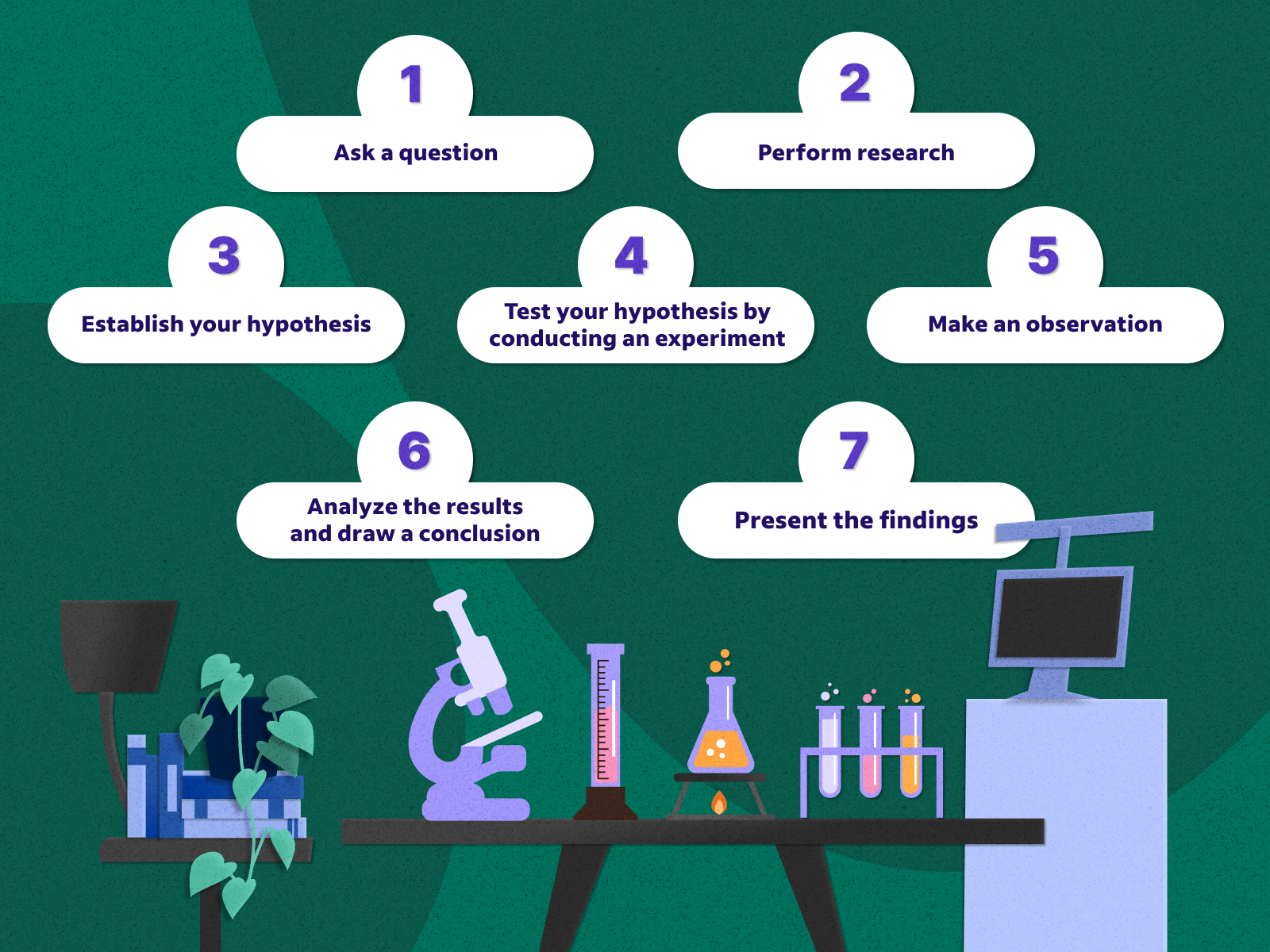A scientific theory helps to make predictions and explain observations. (1) They provide the most logical explanation as to why something happens the way it does. (7) These theories are not necessarily true or right, but they are the best supported explanation based on evidence. (4) To form a scientific theory, scientists use the scientific method. It is an iterative process. (6) It has five steps: (6)
- Make an observation.
- Ask a question.
- Form a hypothesis, or testable explanation.
- Make a prediction based on the hypothesis.
- Test the prediction.
- Iterate: use the results to make new hypotheses or predictions.

After you have formed a scientific theory, formulate a hypothesis and test them multiple times to ensure their validity. (5) This hypothesis must be testable. (4) It should be logically consistent. (1) Your scientific theory will propose why something happens. (7) The theory should be based on the observations you have already observed. (4) The success of the theory is supported by the truths found in the scientific method. (2) Not all the propositions of a scientific theory should be regarded as true. (2) A scientific theory should be unique, simple, and testable. (3) They are also just a framework for the bigger picture. (3)

The process will repeat itself many times to validate the theory. (6) By this point, the scientific theory will become an accepted fact. (5) These theories can explain the connection between events. (1) Even if a theory is found to be incorrect, it still has value. (6) Science has been furthered by the testing of the theory and it allows scientists to learn more about a concept. These theories can be disproven often when new information emerges. (5) We find new ways to revitalize old ideas everyday. (3)
Thank you so much for reading my blog post! I hope you will continue to read the next one.
- https://learn.saylor.org/mod/page/view.php?id=21607
- https://philarchive.org/archive/PETWEO
- https://www.forbes.com/sites/startswithabang/2016/02/13/ask-ethan-what-makes-a-theory-a-scientific-one/?sh=2e1f7eb842d4
- https://manoa.hawaii.edu/exploringourfluidearth/physical/ocean-floor/continental-movement-plate-tectonics/practices-science-opinion-hypothesis-theory
- https://www.masterclass.com/articles/theory-vs-law-basics-of-the-scientific-method
- https://www.khanacademy.org/science/biology/intro-to-biology/science-of-biology/a/the-science-of-biology
- https://blog.ed.ted.com/2016/06/07/whats-the-difference-between-a-scientific-law-and-theory-in-ted-ed-gifs/

Hi Aniela!
I enjoyed reading your post this evening as it helped me better understand topics covered in courses I’ve taken in previous years, where different scientific theories came up for the same subject. Your post helped clear things up and I wish I knew this a year ago.
I found a link to theory change in science you might find helpful.
https://link.springer.com/chapter/10.1007/978-94-010-2548-5_10
I can’t wait to read your next post!